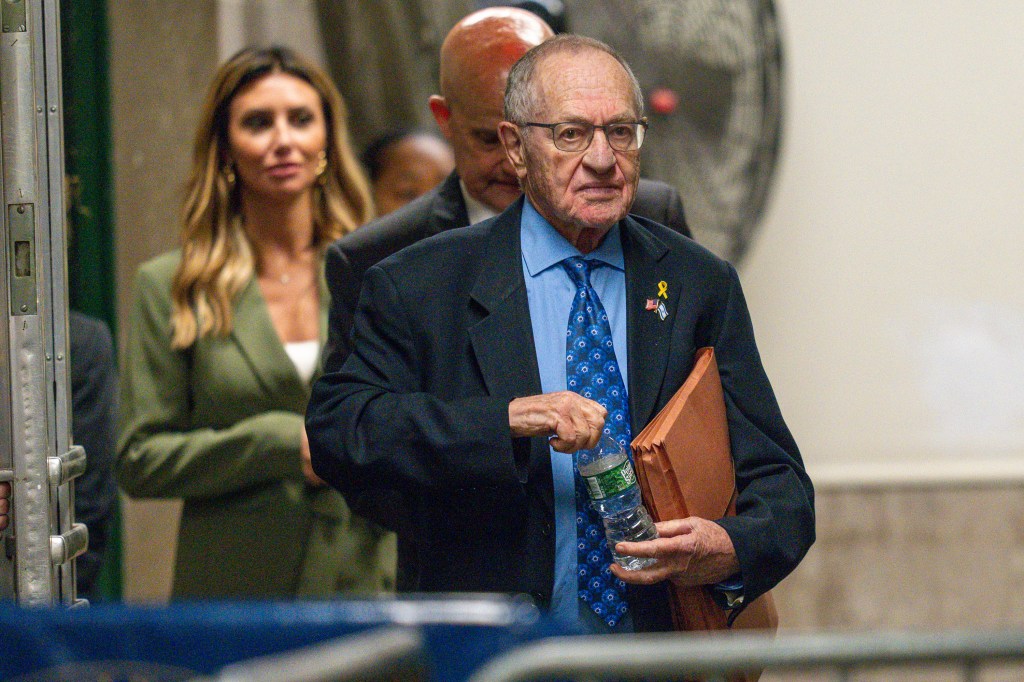I was inside the court when the judge closed the Trump trial, and what I saw shocked me
I have observed and participated in trials throughout the world. I have seen justice and injustice in China, Russia, Ukraine, England, France, Italy, Israel, as well as in nearly 40 of our 50 states.
But in my 60 years as a lawyer and law professor, I have never seen a spectacle such as the one I observed sitting in the front row of the courthouse yesterday.
The judge in Donald Trump’s trial was an absolute tyrant, though he appeared to the jury to be a benevolent despot. He seemed automatically to be ruling against the defendant at every turn.
Many experienced lawyers raised their eyebrows when the judge excluded obviously relevant evidence when offered by the defense, while including irrelevant evidence offered by the prosecution.
But when the defense’s only substantive witness, the experienced attorney Robert Costello, raised his eyebrows at one of New York Supreme Court Justice Juan Merchan’s rulings, the court went berserk.
Losing his cool and showing his thin skin, the judge cleared the courtroom of everyone including the media.
For some reason, I was allowed to stay, and I observed one of the most remarkable wrong-headed biases I have ever seen. The judge actually threatened to strike all of Costello’s testimony if he raised his eyebrows again.
That of course would have been unconstitutional because it would have denied the defendant his Sixth Amendment right to confront witnesses and to raise a defense.
It would have punished the defendant for something a witness was accused of doing.
Even if what Costello did was wrong, and it was not, it would be utterly improper and unlawful to strike his testimony — testimony that undercut and contradicted the government’s star witness.
The judge’s threat was absolutely outrageous, unethical, unlawful and petty.
Moreover, his affect while issuing that unconstitutional threat revealed his utter contempt for the defense and anyone who testified for the defendant.
The public should have been able to see the judge in action, but because the case is not being televised, the public has to rely on the biased reporting of partisan journalists.
But the public was even denied the opportunity to hear from journalists who saw the judge in action because he cleared the courtroom.
I am one of the few witnesses to his improper conduct who remained behind to observe his deep failings.
Even when journalists do report on courtroom proceedings, their accounts must be taken with a grain of salt. When you watch CNN or MSNBC, you generally see an account of a trial that never took place.
They spin the events so much that reality is totally distorted.
I experienced that distortion firsthand yesterday, when I saw one of my former students and research assistants, a CNN legal analyst named Norman Eisen, during a break and went over to him and asked him about his family. We chatted for a few minutes in the most friendly way.
Get opinions and commentary from our columnists
Subscribe to our daily Post Opinion newsletter!
Thanks for signing up!
But NBC, the Daily Beast and other media decided to make up a story about the event. They claimed that I had a spat with my nemesis, rather than a friendly conversation with a former student.
Their account was made up, yet it was circulated through the media.
To his credit, Eisen wrote to the media to correct the account, saying that the person sitting next to him would confirm the media’s false reporting. I doubt we will see a retraction.
This minor incident is simply the tip of a very large and deep iceberg of false reporting about the trial that can only occur because the proceedings are not being televised.
There are television cameras in the courtroom, and they record and transmit every word, but not to the public; only select reporters in the overflow room see what the cameras transmit.
There is absolutely no good reason why a trial of this importance, or any trial, should not be televised live and in real time.
Allowing the public to see their courts in action is the best guarantee of fairness.
As Justice Louis Brandeis wisely said a century ago, “Sunlight is the best disinfectant.”
When I was a kid growing up in Brooklyn, we used to listen to the colorful account of Dodger games rendered by Red Barber on the radio.
Occasionally when I went to a game and brought my portable radio, I could hear how the “old redhead,” as we called him, colorfully elaborated and exaggerated what was occurring on the field.
Once television came along and everyone could watch the games live, the accounts became far more accurate, because we could see everything for ourselves.
A similar phenomenon would operate if trials were televised; it would force commentators to tell the truth and nothing but the truth.
Today there is no check on partisan reporting of trials and exaggerations and personal opinions are rampant.
The American public is the loser.
Alan Dershowitz is a professor emeritus at Harvard Law School.





